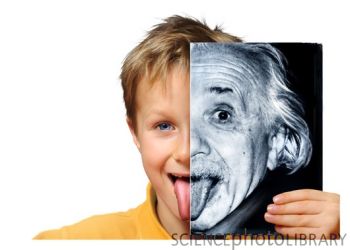 爱因斯坦曾经说过:“在30岁之前没有对科学做出他的最大贡献的人将永远不会有这种贡献。”但是一项研究发现,年轻、有才华的科学家做出关键突破的典型形象可能被颠覆。
爱因斯坦曾经说过:“在30岁之前没有对科学做出他的最大贡献的人将永远不会有这种贡献。”但是一项研究发现,年轻、有才华的科学家做出关键突破的典型形象可能被颠覆。
Benjamin Jones 和Bruce Weinberg对1875年到2008年诺贝尔物理学奖、化学奖和医学奖的获得者进行了一次历史和传记的分析。这组作者比较了创造力顶峰的年龄(根据诺贝尔奖获得者进行他们的获奖研究的平均年龄)在各个领域如何变化,以及在领域内如何随着时间变化。
这组科研人员发现,在1905年前,30岁之前实现巨大的科学成就在所有学科都常见,但是与爱因斯坦所说的相反,这种情况已经变得越来越少见。一个例外是,20世纪早期40岁之前进行获得诺贝尔奖的研究的频率增加,在1934年量子力学出现的时候达到了顶峰。
这组作者提出,在1905年后,30岁之后取得最大科学成就的趋势与两个因素有关:知识的积累,这增加了诺贝尔奖获得者获得最高学位的年龄;以及理论研究变得不那么流行——理论研究通常是抽象演绎的,与实验贡献相比,对知识积累的依赖较少。
相关英文论文摘要:
Age dynamics in scientific creativity
Data on Nobel Laureates show that the age–creativity relationship varies substantially more over time than across fields. The age dynamics within fields closely mirror field-specific shifts in (i) training patterns and (ii) the prevalence of theoretical contributions. These dynamics are especially pronounced in physics and coincide with the emergence of quantum mechanics. Taken together, these findings show fundamental shifts in the life cycle of research productivity, inform theories of the age–creativity relationship, and provide observable predictors for the age at which great achievements are made.
英文论文链接: https://www.pnas.org/content/early/2011/11/03/1102895108.abstract







